Blog
October 22nd, 2009
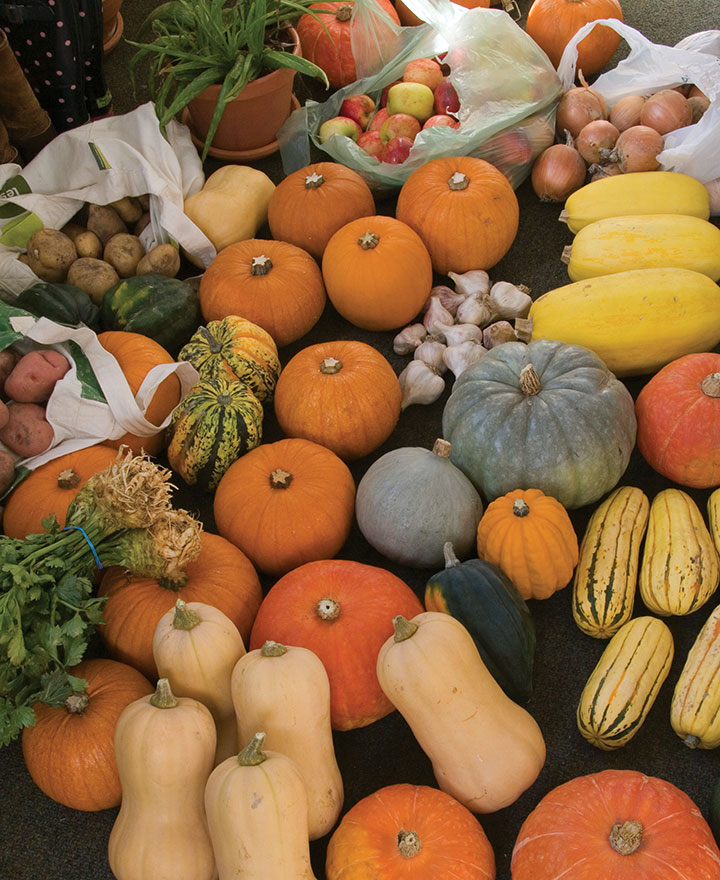
If you had seen our back porch last weekend, you’d probably think we were starting our own farmers market. But this is a typical sight for many seasonal foodies like us; when you swear off strawberries in January, you need enough fresh autumn fruits and veggies to last you until the end of April (notwithstanding my usual February freak-out where I cave in to a craving or two for salad).
We still have quite a ways to go yet, but we’re working hard to fill our root cellar, attic, freezer and pantry shelves with a wide variety of staples and goodies to keep our winter diet interesting. Here’s what we’ve got so far:
In the root cellar:
– 20 lbs. onions
– 10 lbs. apples (still need 2 bushels)
– 10 lbs. potatoes (still need at least 80 lbs., plus a bushel of carrots and parsnips)
– 9 bottles of wine
In the freezer:
– 4 lbs. locally cured, nitrate-free bacon
– 5 whole, local “Rosie” chickens
– various cuts of local, organic meat
– various cuts of venison, provided by my father-in-law
In the refrigerator:
– 5 lbs. fresh cranberries (for canning; more to come)
– 2 or 3 red cabbages
– 6 or so honeycrisp apples (which don’t keep long but are my favorite kind)
– 1 bunch celeriac root now in my belly—yum!
– 1 lb. garlic
In the pantry:
– 25 lbs. rolled oats
– 5 lbs. steel-cut oats
– 10 lbs. coarse-ground grits (not local, obviously, but the mill is definitely a mom n’ pop operation)
– at least 6 different kinds of rice
– 30 lbs. sugar (mostly for canning)
– 3 quarts local, single-source honey
– 15 or so different varieties of loose-leaf tea
The Tailor’s 2009 home preserving yield to date:
– 5.5 quarts dried blueberries
– 6 pints blueberry syrup
– 5 pints canned whole blueberries
– 9 pints blueberry jam
– 9.5 pints blackberry jam
– 8.5 pints raspberry jam
– 6 pints strawberry jam
– 15 pints canned heirloom tomatoes
– 16 pints tomato sauce
– still to come: apple butter, apple sauce, cranberry sauce, chicken broth
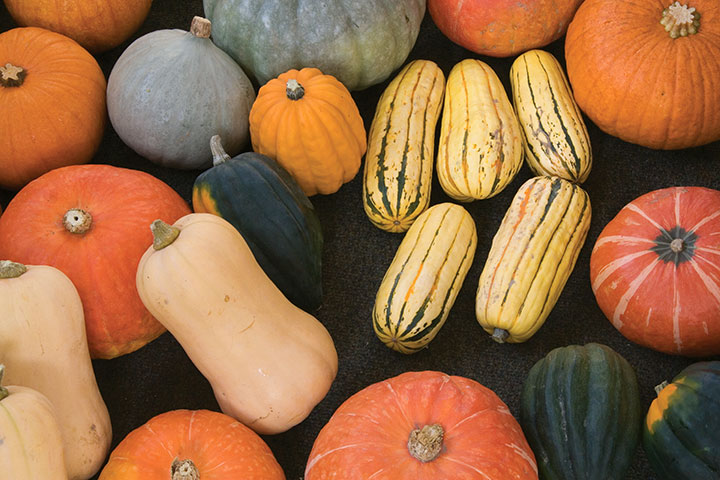
And then there’s the winter squash in the attic: one of my favorite parts of the season, and of living and eating in the Pacific Northwest.
In the attic:
– 14 sugar pie pumpkins
– 8 kabocha squash
– 7 delicata squash
– 6 carnival squash
– 7 acorn squash
– 6 butternut squash
– 3 spaghetti squash
– 1 mini hubbard squash
– 1 jarrahdale pumpkin
Okay, we might have gone a little overboard on the squash, but I never get tired of it, and it’s an important staple of a seasonal diet. We keep these babies in the attic because they last much longer there—pumpkins and squash prefer a cool, dry environment to the cool humidity of the cellar. Our squash colony is a big conversation piece, and we get a lot of questions about pumpkin storage, so I’ll share the scoop:
First, choose squash and pumpkins with intact stems—those that have had their stems snapped off won’t last long. Next, make sure your squash was harvested before the first hard freeze; post-freeze specimens rot fast. Check around the stem and on the bottom end for any mold, rot, blemishes, damage, or sogginess. Now it’s time to sock them away—an attic is best, but anywhere that’s cool, dry and dark will work fine (but never let them freeze! During a cold snap last year we had to haul them all down into the living room when the attic hit 32 degrees!). Don’t stack your squash; just like apples, a rotten squash can infect any neighbors it touches. Instead, we make little “nests” for them by crumpling up newspaper and cushioning each one individually, in a single layer. As long as they’re unblemished and in good shape, and stored carefully, many varieties will last until at least March. Spaghetti squash will often keep until April, but sadly, butternut (my absolute favorite) tends to have the shortest lifespan. So eat those first, and relish every bite.
I feel like a little pumpkin pie. How about you?
October 11th, 2009

Autumn is, hands-down, my favorite time of year. So many of the things I love about fall have to do with food (mulled cider, pumpkin pie, spiced apples, butternut squash, fried green tomatoes, celeriac—the list goes on and on), and since the Tailor and I eat as seasonally and locally as we can, it’s a darn good thing we live in a state with such abundant produce at hand.

Both T-town and Seattle have incredible open-air markets (hello, Pike Place? I love you.), but my favorite of all is the quietly-unassuming Olympia Farmers Market. Our state capital might not be the hoppin’ tourist hub that downtown Seattle is, but Olympia’s gigantic, spectacular market is one of the best I’ve ever seen, anywhere.
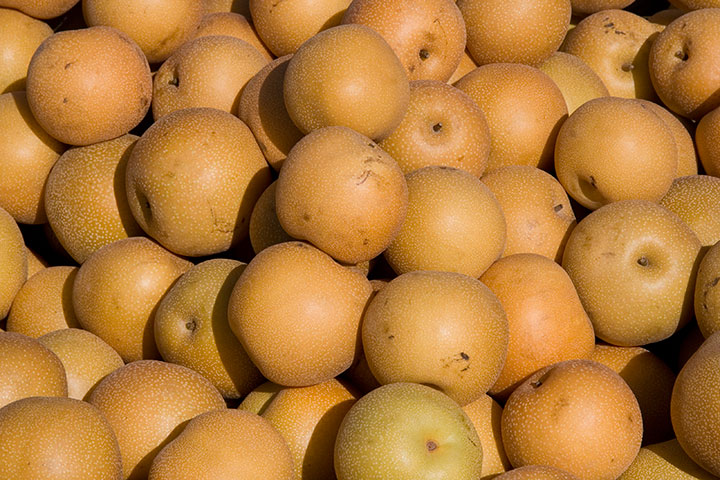
This is the place where you can find around forty different types of Washington apples, and another dozen or so kinds of pears (above are Asian pears, which count as honorary apples in my book).
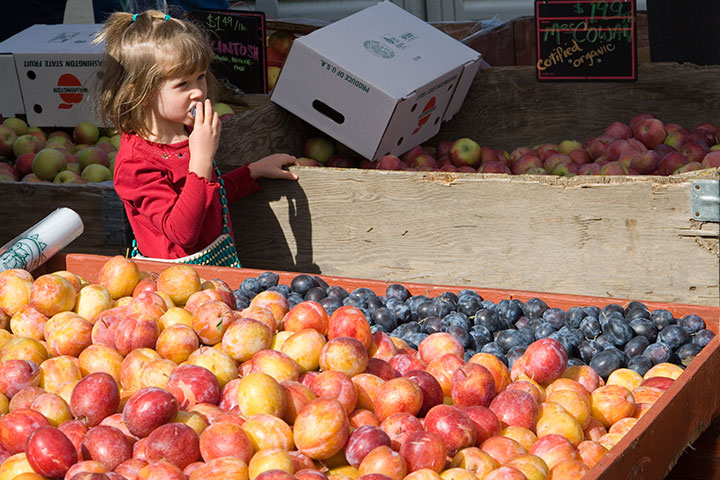
And there’s plenty of everything else, too. The sheer variety is staggering, and distracting—especially when your mission for the day is to buy just one variety of overwintering apples for your root cellar.
Though I must say, I love seeing the transformation from this:
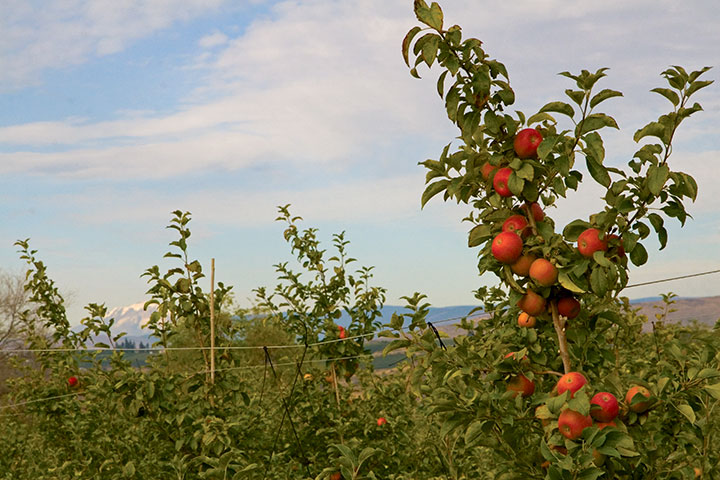
To this:

Ingredients for a perfect Sunday: crisp sunny weather, countless apple bins to dig through, a handful of friendly Olympians, and a dash of live bluegrass music for spice.
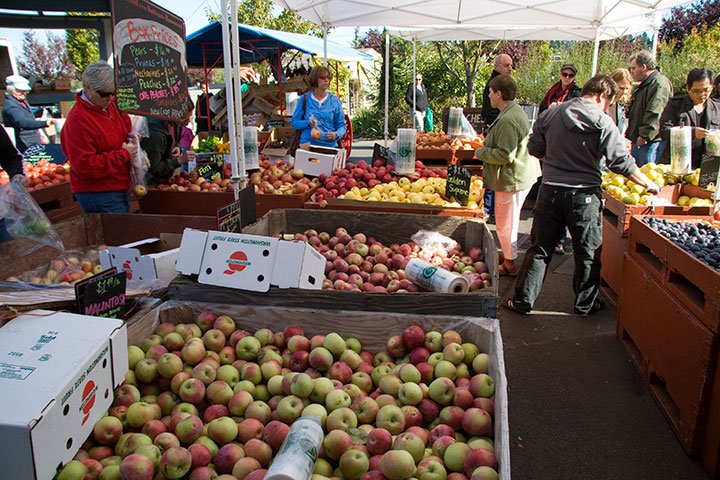
The apples are always a show-stopper, but our biggest goal for the day was something we can’t get at any of the three Tacoma farmers markets:
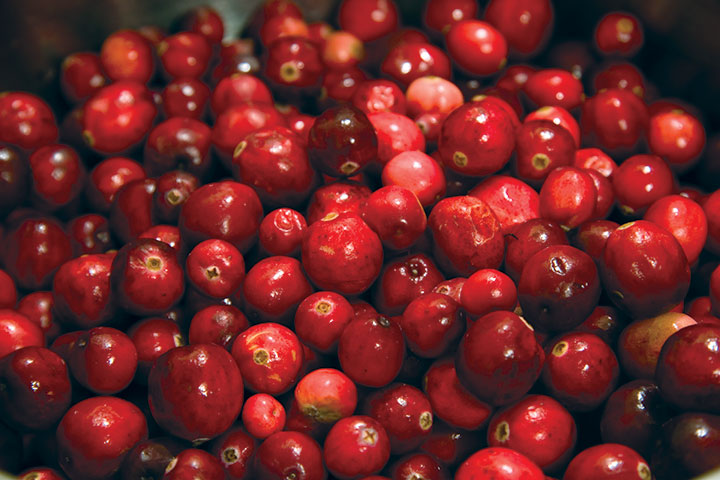
Fresh cranberries. Olympia is the first stop for cranberries coming in from the coast, and the season is now in full swing. We took home just five pounds this time, but you can bet we’ll be back for more. The Tailor and I have a deep and abiding love for cranberry sauce (it’s great on grits. Don’t look at me like that.), and we kicked off this year’s harvest by finishing off the last jar of our 2008 canning crop.
Homemade cranberry sauce is an incredibly easy thing—so much so that I really don’t understand why so many recipes call for Jello. Cranberries have so much natural pectin in them that with enough sugar they’ll jell on their own. In any event, the Tailor and I believe that cranberry sauce should be a sauce, not a can-shaped cylinder of jelly. So in honor of those little rubies from our rugged coast, here is our favorite recipe:
Cranberry sauce
– 1 lb. fresh cranberries, washed and drained
– 2 c. water
– 1 1/2 c. sugar
Combine the water and sugar and bring to a boil in a small saucepan. Boil for about two minutes on high before stirring in the cranberries. Put the lid on and listen; when the cranberries start popping like crazy and the sauce has begun to foam up, it’s done. This takes less than five minutes. Serve hot or cold (or on grits!).
Note: remember to put that lid on, or you’ll have hot, popping cranberries everywhere!
September 13th, 2009
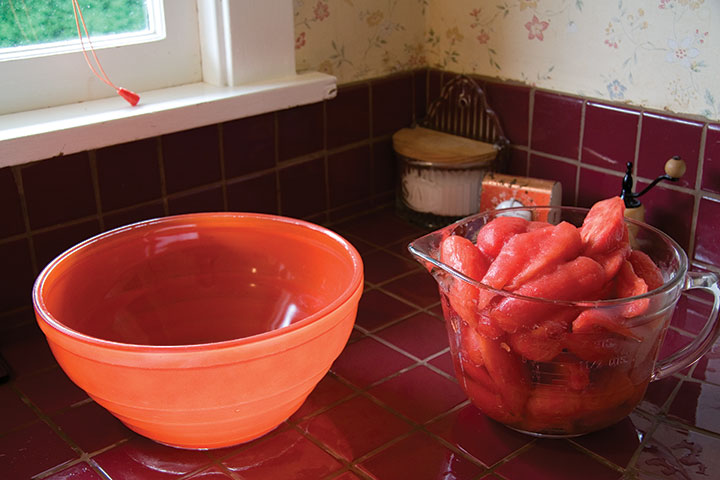
The season is turning ’round these parts—it seems the whole world is tinged with hints of red and gold. We had another warm weekend, but I’m not fooled; behind the hot sun are chill mornings and the rush of the harvest.
So it was another canning weekend for the Tailor, supplied by our latest farmer’s market haul and our final trip to the Blueberry Park for the year. We had to work hard for it yesterday, but amongst the nearly-spent, now-crimson bushes, we found just enough berries for one more batch of jam. Our total haul for the year? Over fourteen gallons of blueberries! In the spring we’ll return the favor by volunteering.
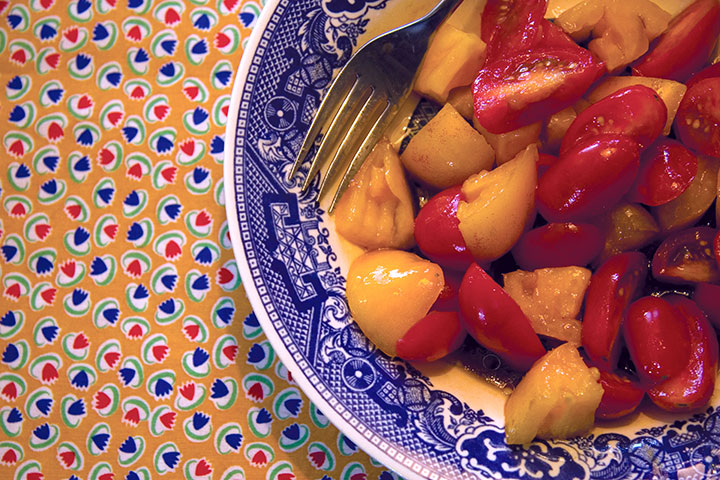
There’s no time to pine for berry season, though—now we’re up to our eyeballs in heirloom tomatoes (like these beauties from our favorite farm in the Puyallup Valley, splashed with a little oil and balsamic). And soon it’ll be time to get the root cellar and attic ready for a winter’s worth of squash, onions, potatoes, and pumpkins (more on that later). Marking transitions is my favorite part of eating seasonally, and autumn is my favorite time of year. I’ll be ready for fall’s bounty—camera in one hand, fork in the other.
August 31st, 2009
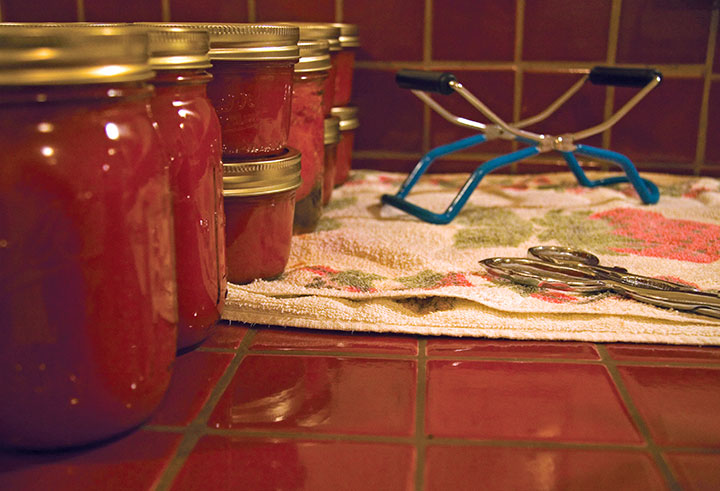
Here at Chez Anagram we’ve got some serious sketching, sewing, stamping, sawing, stirring, scribbling, and, well, scrambling goin’ on. So this is just a quick gasp of air at the surface before I dive back in.
I’ve got a few things to show and tell, but they need a little tweaking first. In the meantime, I’ve finally found something that goes with our scarlet-tile countertops. Just thought I’d share.
See you soon.
July 29th, 2009
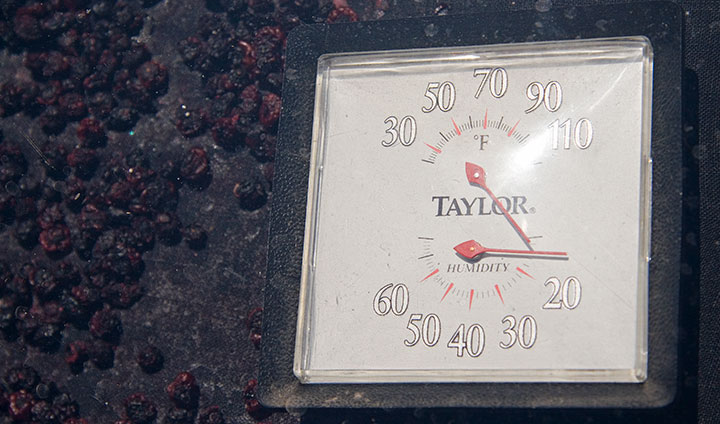
They’re predicting 105 degrees today here in T-town—that’s an all-time, record-breaking high. Now, if you’re in the Midwest, the South, or the Southwest and you’re reading this, you’re probably thinking, “And this is news how?” Well, this is where the part about “all-time” comes in—since white settlement of this area, at least, it has never, ever been this hot before. This place ain’t made for 105°. Almost nobody has air conditioning, but the discomfort is only the half of it. Who knows what this will mean for the snow pack in the mountains, or the water supply?
Beastly or not, though, it seemed a shame to let all this amazing solar energy go to waste. So over the weekend the Tailor devised a passive food dehydrator out of old window panes (buying an electric dryer, to us, seemed to defeat the purpose of home sustainability). Our first attempt at drying berries seemed successful, so at 5:30 this morning,before the heat kicked in, we headed to the Blueberry Park to pick about three gallons more. (The berries are happy with the heat, even if nobody else is!)

Here’s how it works: four nylon window screens (don’t use aluminum! It reacts with the food) hover over the pavement, propped up on wooden beams to allow for air circulation. Tied to each screen is a black linen cloth to absorb more heat and provide a clean surface for the food, while still letting air pass through. The glass windows fit right on top, providing the perfect space to trap hot air, just like a greenhouse.
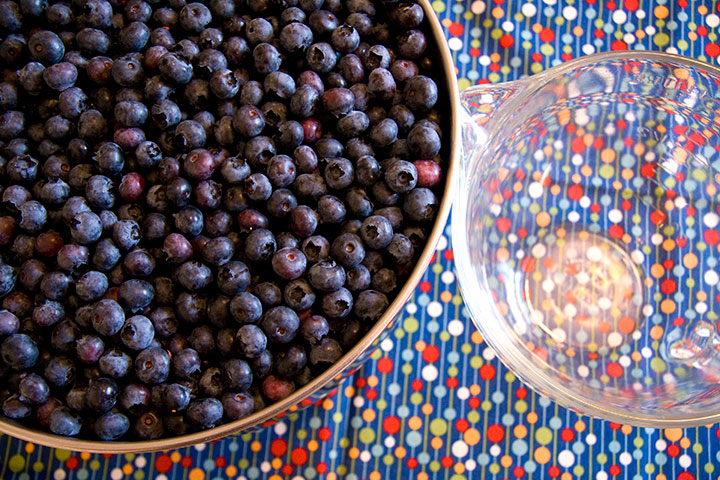
Now, on to the fruit itself. For blueberries, at least, the dried yield ends up being about a quarter of what you started with (so for example, two quarts of fresh berries will become about a pint dried), so it’s best to start with a big batch—another vote for a large, homemade drier over those tiny electric ones. Our drying system will hold five or six quarts of fresh berries.
Wash the berries and remove any stems, petals, grass and unripened fruit (and especially spiders!), and set a large stockpot of water to boil. Place about a quart of berries into a steamer —the berries will dry faster if you split the skins first, and smaller batches seem to be more effective than boiling the whole batch at once.

Once your water is boiling, put the steamer into the pot, and boil for thirty seconds—just long enough for the skins to split. Then remove the steamer and dump the hot berries into a colander in a cold sink (the ice water stops the cooking process).
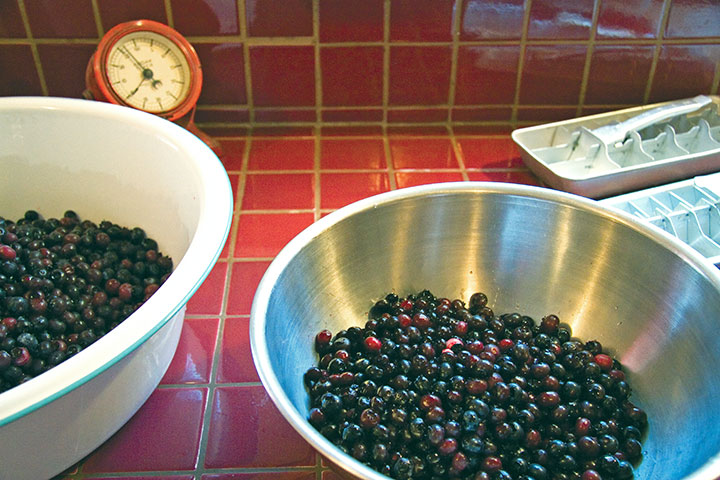
Here’s what the split berries look like; they should feel squishy, and you should be able to see the pale interior flesh on some of them. (Sorry about the photo quality—that red tile just kills the light.)
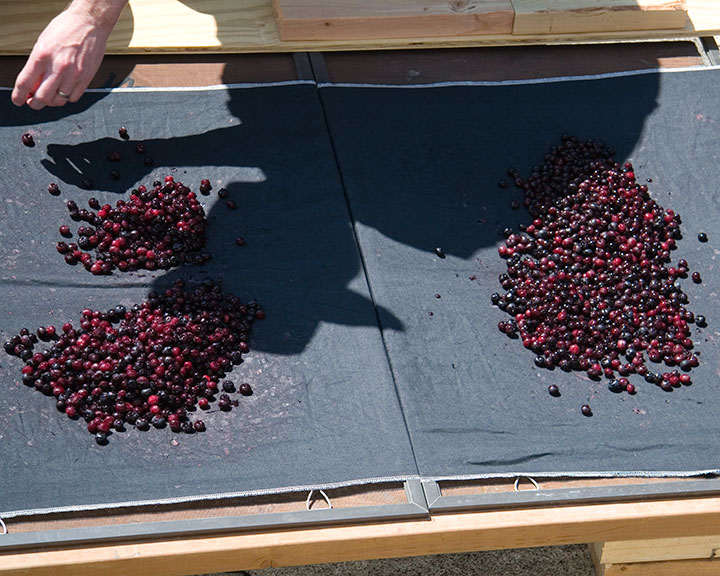
Okay, now you’re ready to take ’em outside. Distribute the berries evenly over the cloth-covered screens,

and spread them out until you have a single layer.

Now, just put the glass back into place, and let the sun do the work. It’s amazing how quickly the humidity inside the glass disappears, and how hot it gets in there. The ideal temperature for drying blueberries is about 140°F, but we’ve already seen our dryer get up to 155°. It doesn’t seem to hurt the final product, but at the hottest part of the day we cover the glass with a sheet for an hour or so, just to cool it down a bit.
About once a day it’s good to redistribute and un-stick the fruit, which helps it dry faster and more evenly. It takes about three full, sunny days to dry the berries completely—unlike raisins, you want blueberries to be so dry they rattle. You should end up with hard little husks that don’t squish and don’t stick together.
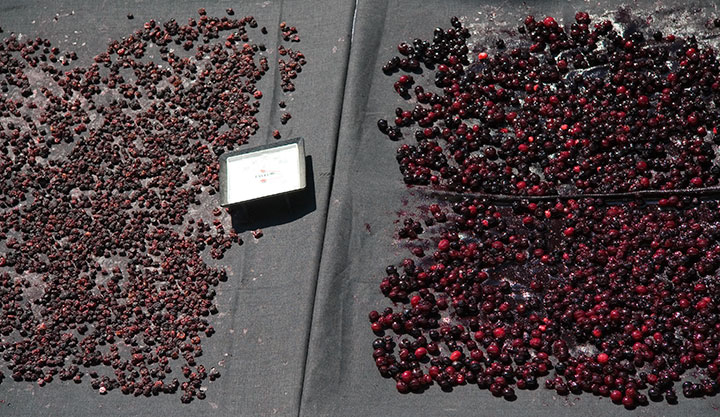
Here you can see the difference between fresh, split berries and ones that are almost done. Once they’re dry, pasteurize them for fifteen minutes in a 175° oven to kill any residual germs, and store in a sealed, air-tight jar.
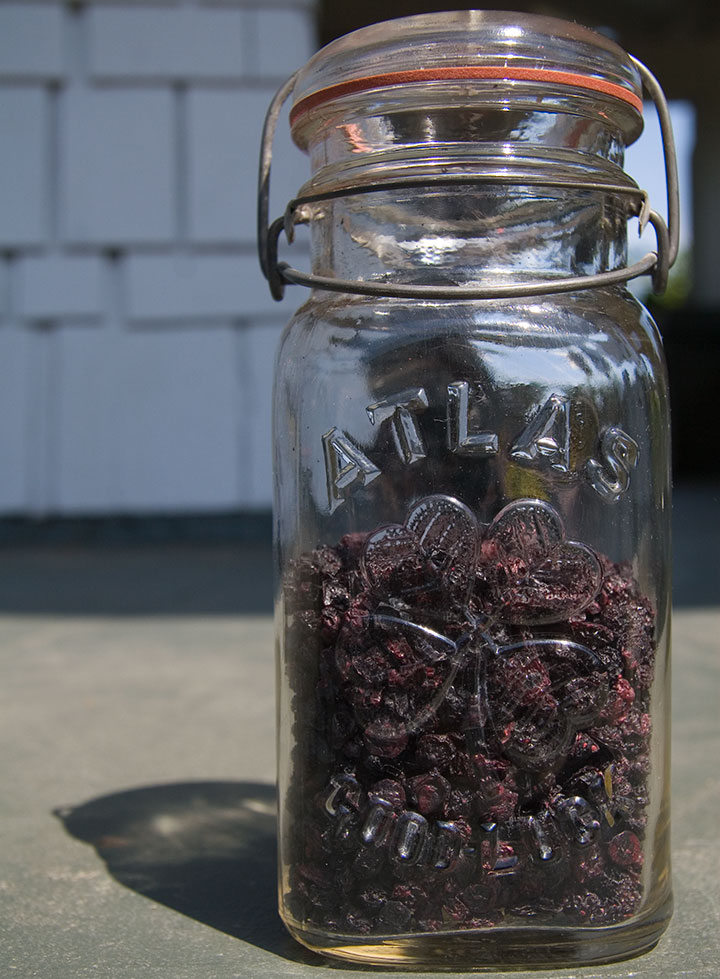
Since we’ll probably use our dried berries for a wide variety of recipes, we left them unsweetened. That way we can reconstitute them for pancakes, sauces and baked goods this winter without any recipe guesswork. They’re still sweet enough to eat plain, too (trail mix, anyone?), although if you prefer your berries pre-sweetened, you can coat them in simple syrup before drying.
Either way, you’ll end up with sunshine in a jar.
July 22nd, 2009
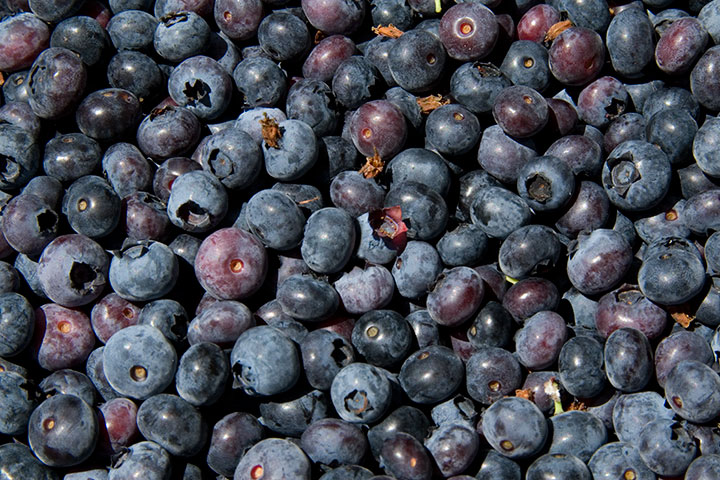
Maybe I’m still not over the shock of moving from Zone Two to Zone Eight, but the sheer variety of fresh produce ’round these parts never ceases to amaze me. Now, if I can barely contain my excitement over what I see at the farmer’s market every week, you can imagine the heart attack I had when the Tailor and I discovered Tacoma’s very own Blueberry Park.
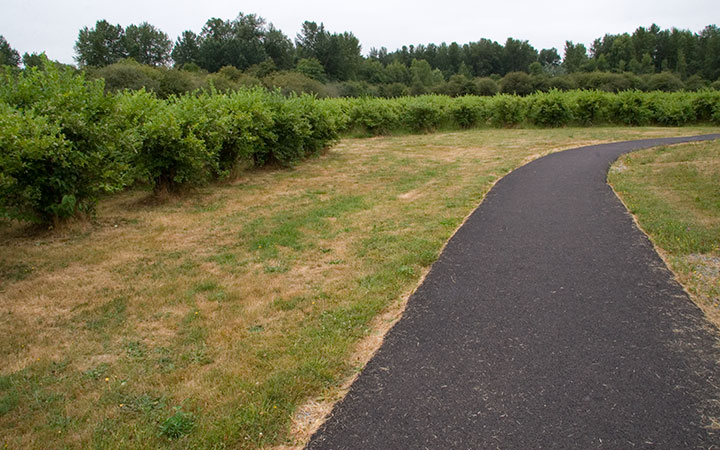
That’s right: a public park. Filled to the brim with blueberry bushes. Four thousand of them. Once upon a time this was a working blueberry farm—after the farm folded or moved on, the land sat vacant and overgrown for years. Eventually Metro Parks took over the land, and decided to free the sixty-year-old bushes from the bracken.
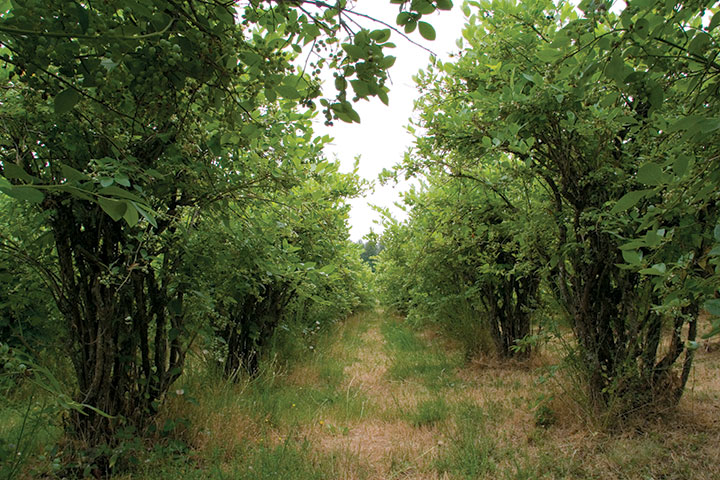
It took years of volunteer labor and many passes by a goat herd to hack back (or eat, depending on one’s preference) the scotch broom and blackberry vines. Now, though, the jungle is mostly kept at bay, and the result is an incredible bounty of pesticide-free berries. The best part? The pickin’ is free. Yes—all the fresh blueberries you, or I, or anyone and their maiden aunt can possibly pick, as many times as we like, for free. And with 4,000 bushes, there’s more than enough to go around. Talk about your tax dollars at work.
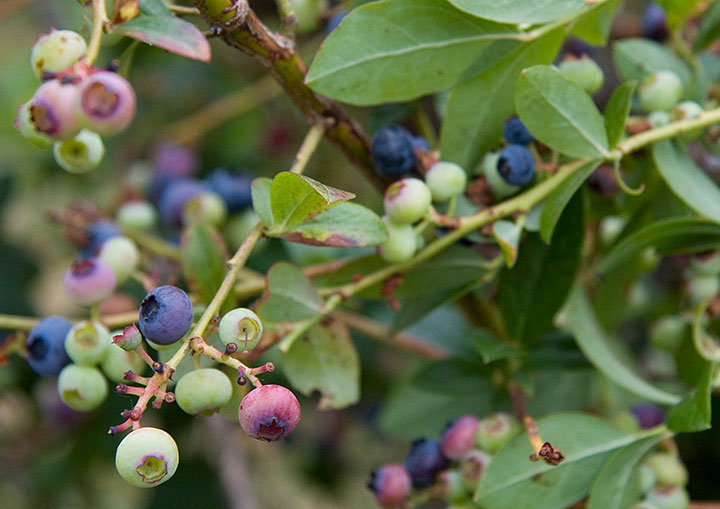
The Tailor and I woke up before the sun today for our third berry-picking session. Our two previous trips to Blueberry Park didn’t yield much, as we were a little early for blueberry season. Today, though, an impressive crop was ready to take home, so with metal pails in hand, we dove right in.
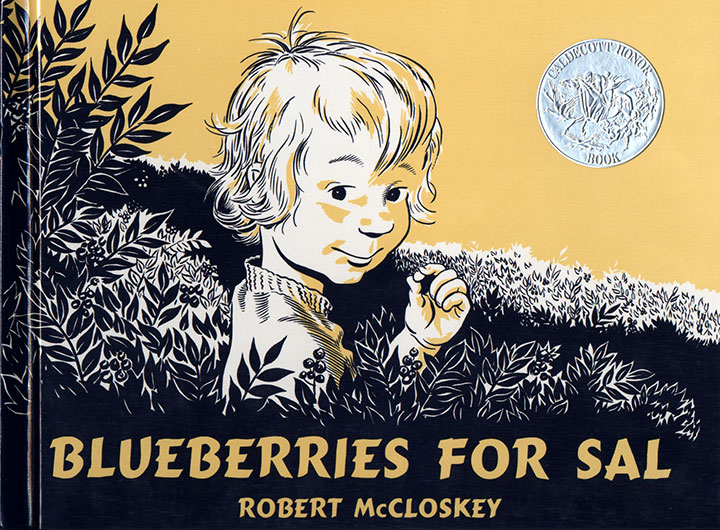
The sound of those first berries hitting the bottom of my pail—kerplink, kerplank, kerplunk—reminded me of one of my favorite children’s books of all time.
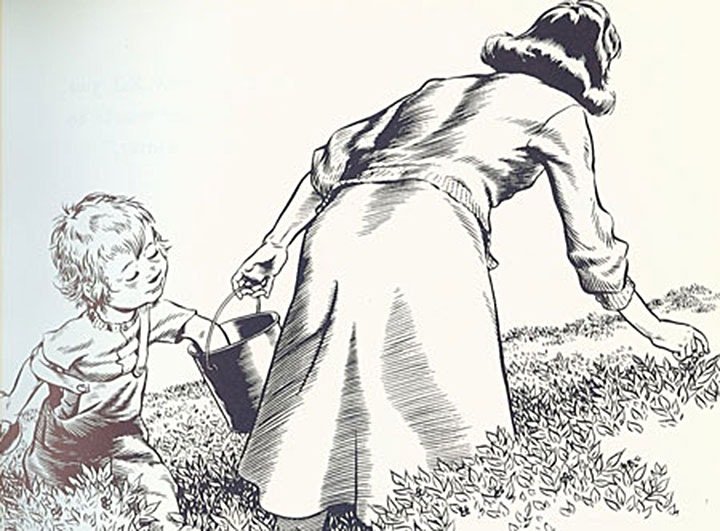
Since we had big plans for these berries, we made sure to arrive with a full stomach.
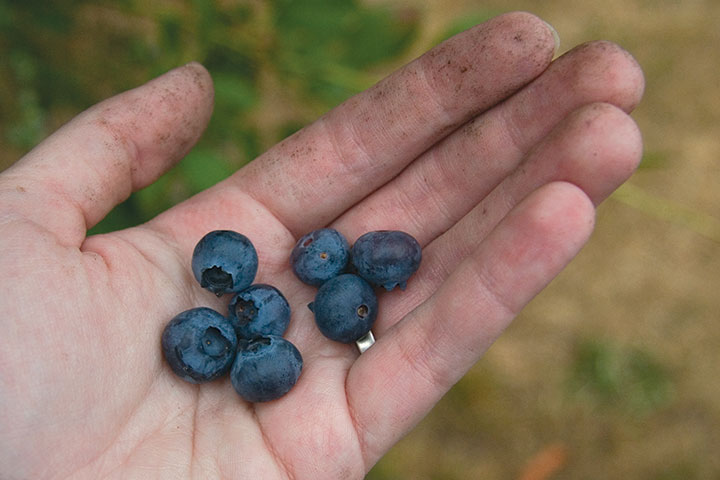
Well, alright, I did eat a few (even with my dirty hands).
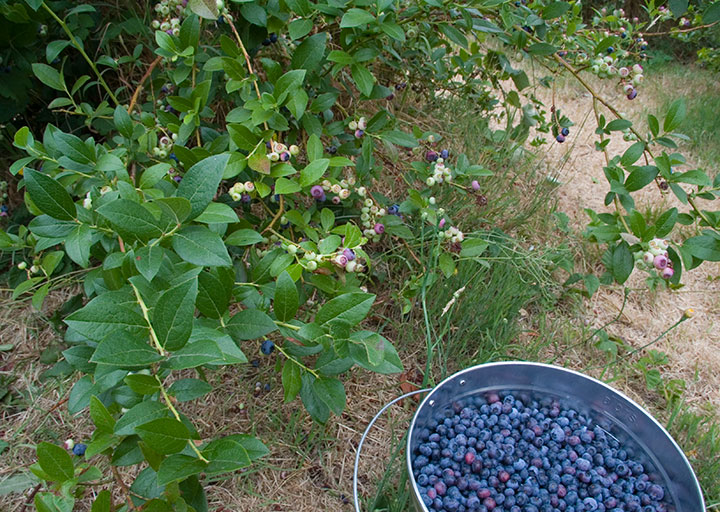
This is the yield of three hours’ work.
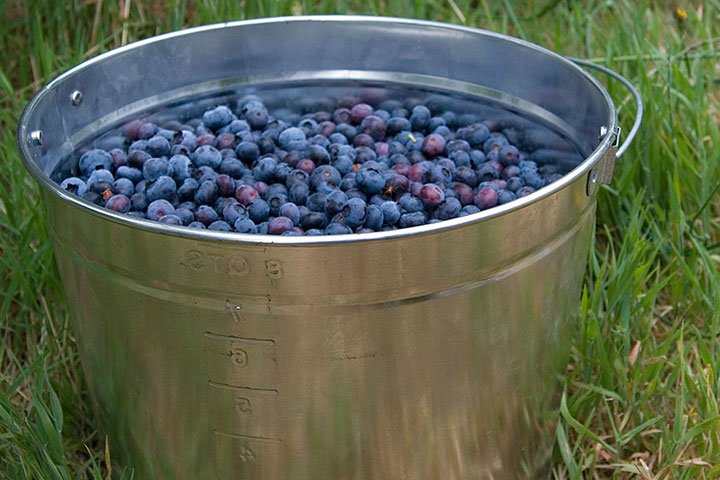
That’s a two-gallon bucket, mind you. We don’t mess around!

Our ultimate goal? The same as Sal’s mum: winter preserves. After all, if you’re a seasonal foodie, the only way to indulge a January craving for berries is to pop open one of your home-canned mason jars.
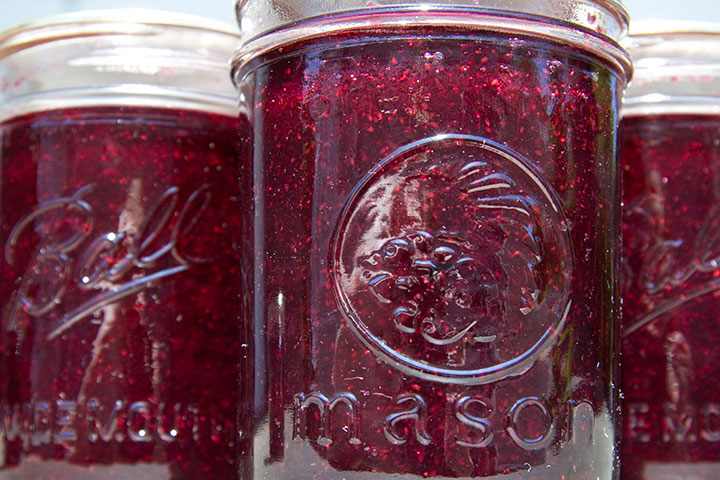
This sparkling jam, yielded by just four quarts of berries, is only the beginning.
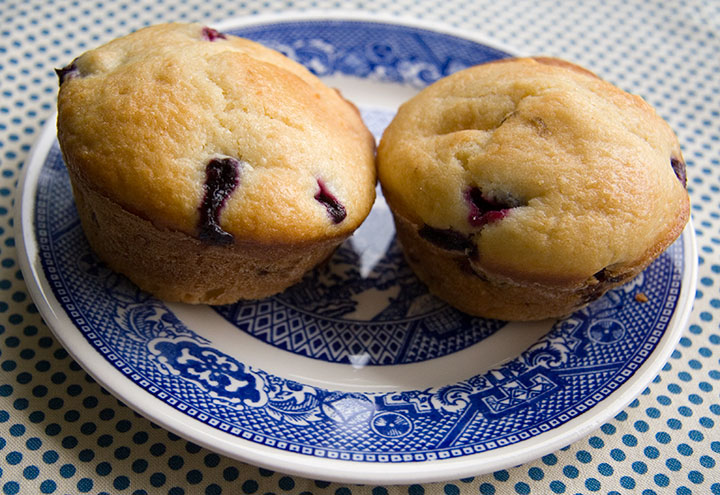
Our house is filled with the scent of baking and the excitement of so many possibilities—pies, pancakes, syrup, glazes, dried berries. What would you do with all the berries you can pick?

Grab a pail, head to south Tacoma, and find out.
July 13th, 2009
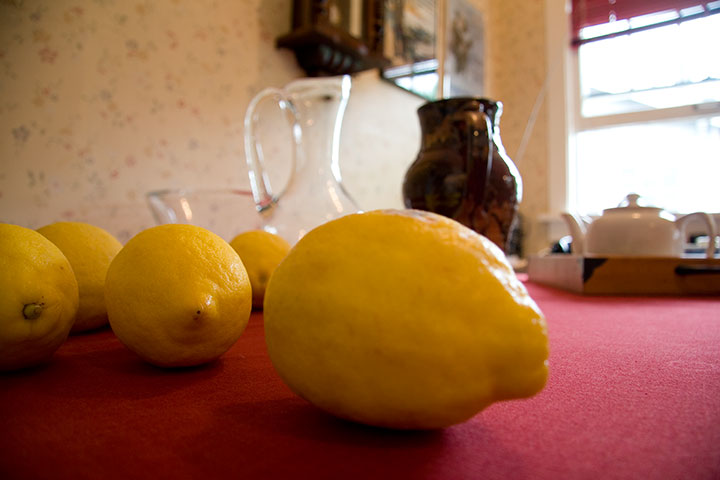
First, invite your family down for the day. Squeeze out some fresh lemonade;
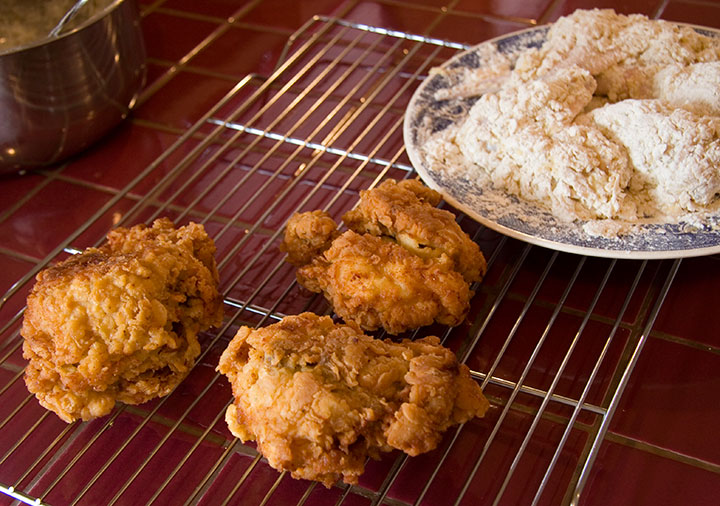
and fry up a free-range chicken.

Then mix up some cream, sugar, and fresh berries (plus just a pinch of that lemon juice to bring out the flavor);
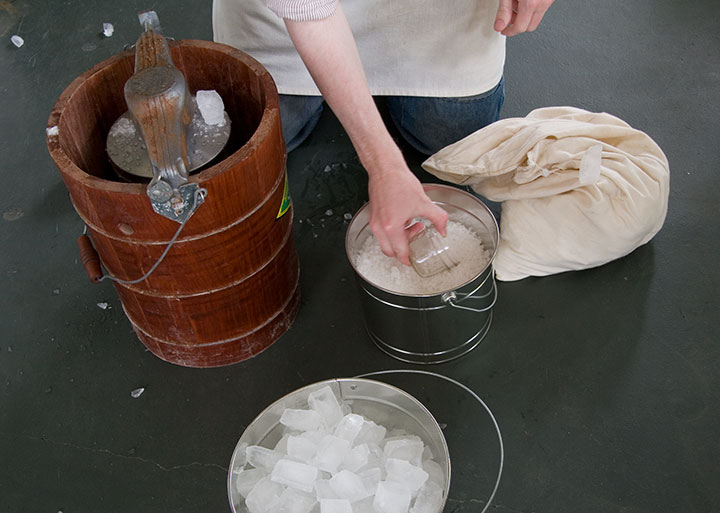
pack ice and salt around it;
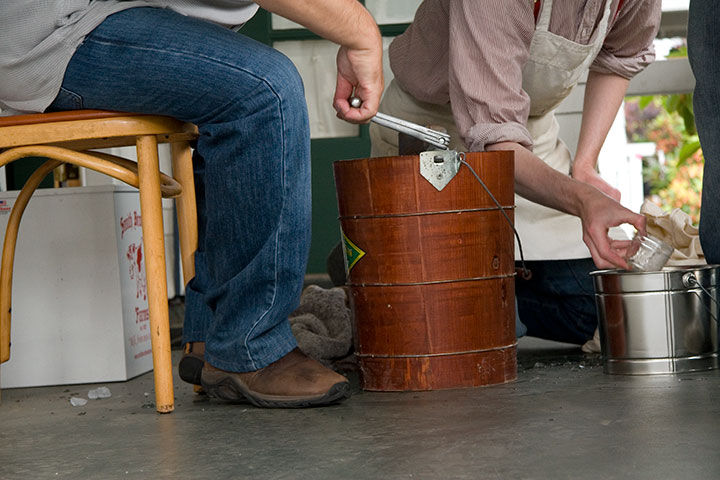
and start crankin’.
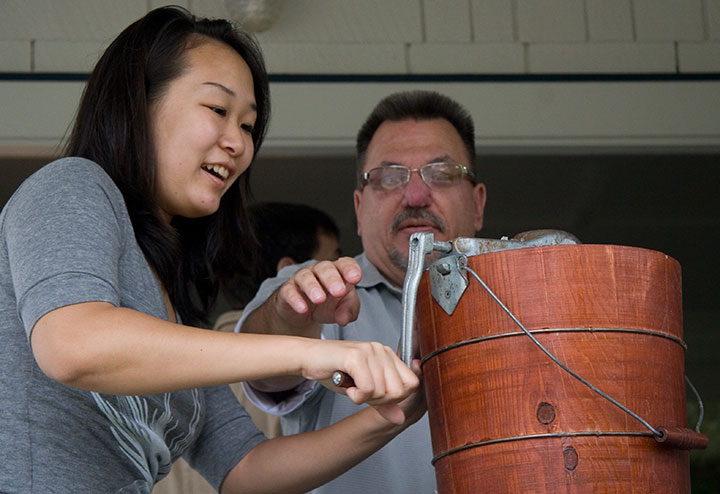
Let everyone pitch in—the longer you churn, the harder it’ll get.
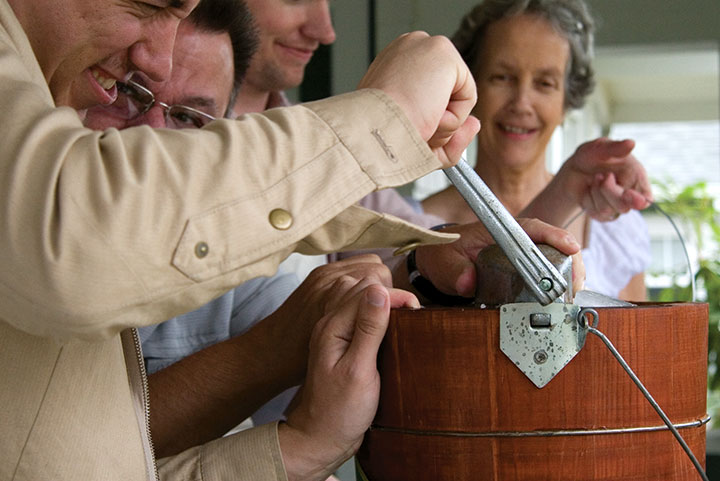
Finally, when even teamwork won’t turn that handle, you’re ready.
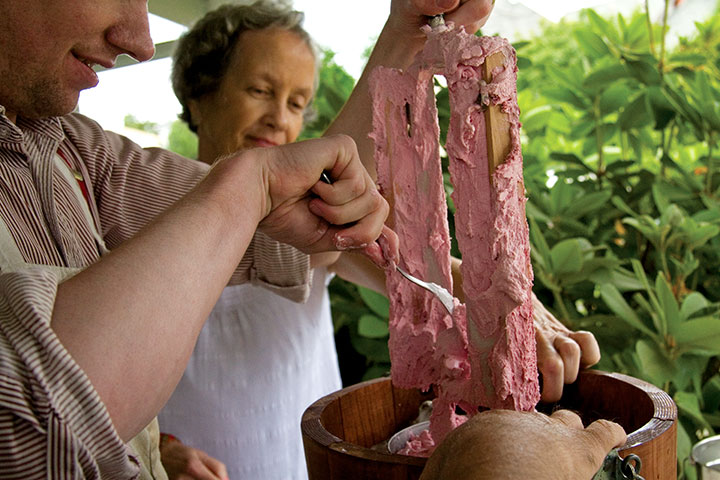
And hey, presto—
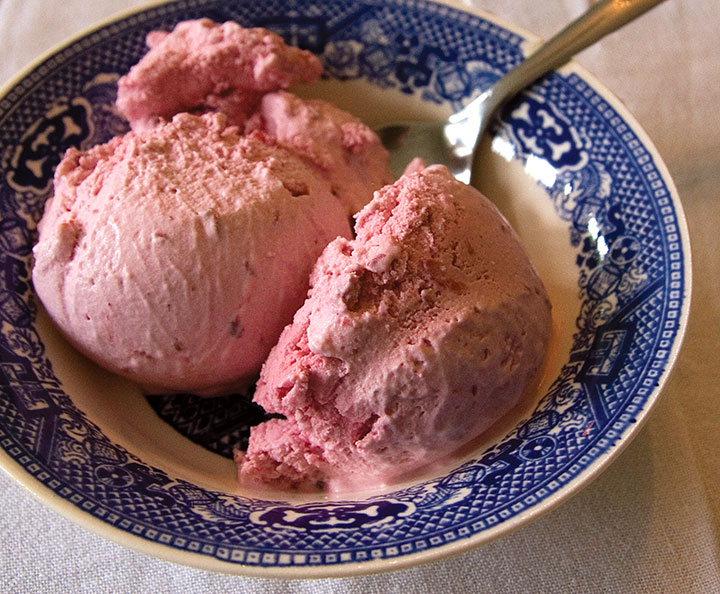
summer in a bowl.

If all that ice cream gives you a chill, just head for the hot shop;

gather around the fire;

and bask in the perfect day you made.


![Chandler O'Leary [logo]](https://chandleroleary.com/wp-content/themes/chandleroleary/images/logo.png)













































